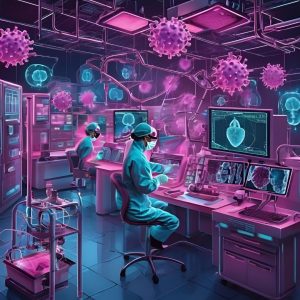The Role of Biomedical Engineering in Pandemic Preparedness
As the world has witnessed in recent years, pandemics can completely disrupt daily life and strain healthcare systems to their breaking points. In such times, biomedical engineering plays a crucial role in preparing for and combating these global health crises. Being a biomedical engineer, I’ve seen firsthand how our innovations have strengthened the resilience of healthcare systems during pandemics and will continue to do so in the future. Let’s explore some of the key ways biomedical engineering contributes to pandemic preparedness.

Rapid Development of Diagnostic Tools
One of the most important elements in pandemic preparedness is the ability to quickly identify and diagnose the pathogen causing the outbreak. Biomedical engineers have been instrumental in developing diagnostic tools that can detect viruses, bacteria, and other pathogens in a matter of minutes. During the COVID-19 pandemic, for example, engineers developed rapid antigen tests, PCR machines, and portable diagnostic kits that became critical tools in identifying and containing the virus.
Looking to the future, biomedical engineers are working on even more advanced diagnostic methods, such as biosensors that can continuously monitor for infection or disease markers in real-time. This would allow for earlier detection and quicker responses to emerging pandemics.

Ventilator Innovation and Distribution
During the peak of the COVID-19 pandemic, there was an urgent global shortage of ventilators. Biomedical engineers stepped in to not only increase production but also design innovative, low-cost ventilators that could be quickly manufactured and deployed in areas with limited resources. The ability to rapidly create and distribute life-saving medical equipment is one of the many ways our field can help manage critical shortages during future pandemics.
Biomedical engineering teams across the globe have developed portable, easy-to-use ventilators that can be mass-produced in a fraction of the time. These innovations have been vital in saving lives during respiratory-related pandemics and will be key in future crises.
Telemedicine and Remote Monitoring
In times of crisis, reducing the strain on hospitals becomes a top priority. One way to achieve this is by expanding the use of telemedicine and remote monitoring technologies.
Biomedical engineers have created advanced wearables that monitor patients from home, reducing hospital visits. These devices track vital signs like heart rate, oxygen levels, and temperature, alerting healthcare providers when needed.
Telemedicine platforms, driven by biomedical engineering, enable patients to consult doctors from home, lowering disease transmission risk and freeing hospital space for severe cases. Remote monitoring and telemedicine proved invaluable during the COVID-19 pandemic and will be essential for future pandemic preparedness.

Vaccine Development and Distribution
Biomedical engineering has also made significant contributions to vaccine development and distribution. The use of advanced biotechnologies such as mRNA platforms (used in COVID-19 vaccines) has been a game-changer. These technologies allow for faster development and production of vaccines, which is crucial when dealing with a rapidly spreading virus.
Biomedical engineers design cold-chain systems to transport and store vaccines, ensuring they stay effective until administered. During the COVID-19 pandemic, they developed new methods to distribute vaccines to remote and underserved areas, ensuring a more equitable global response
Advanced Personal Protective Equipment (PPE)
Early in a pandemic, personal protective equipment (PPE) such as masks, gloves, and gowns are critical to protecting frontline healthcare workers. Biomedical engineers are continually working on improving PPE, making it more effective, comfortable, and sustainable. For example, new mask designs provide better filtration while remaining breathable, and reusable PPE reduces waste and ensures a steady supply during shortages.
In future pandemics, biomedical engineering innovations in PPE will help keep healthcare workers safe and prevent the spread of infections.

Data Analytics and AI for Disease Tracking
Biomedical engineers are also at the forefront of developing AI-based systems for tracking the spread of infectious diseases. These systems analyze data from sources like hospital records, public health databases, and social media to predict where a virus might spread next. This data can then be used to inform government decisions on lockdowns, travel restrictions, and resource allocation.
By harnessing the power of big data and AI, biomedical engineers can help predict future outbreaks, enabling faster and more effective responses to emerging pandemics.
Final Thoughts
Pandemic preparedness is crucial, and biomedical engineering plays a vital role in our response. From rapid diagnostics to life-saving equipment, vaccine development, and advanced PPE, our field is central to combating pandemics.

